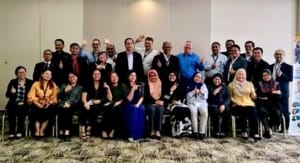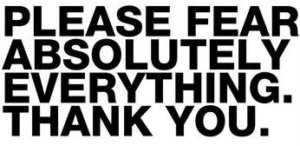In this post, I share 10 Contact Center Operations Management questions for Contact Center leaders who want to gauge their mastery of specific Contact Center know how required for successful operations management.
Because while passion and experience are helpful, Contact Center know how matters too.
A bit of background on the Contact Center Operations Management questions
Managing a Contact Center is a business discipline. It requires very specific know-how. And when I teach Contact Center operations management I cover four modules:
- Managing Wait Time
- Creating Efficiency
- Forecasting the Workload
- Contact Center University
The questions presented below are in multiple choice format and are drawn from the Contact Center management workshops I’ve run around the world for over 20 years.
Read through each question and choose the answer that you think is correct – that’s either a, b, c or d. There is only one correct answer for each question.
The 10 Contact Center Management Questions
1. Which accessibility metric gives management the clearest indication of the wait time a typical caller experiences?
a) Average Speed of Answer
b) Service Level
c) Percent Abandoned
d) Percent Answered
2. Which of the following is the industry standard Service Level?
a) 80% answered in 20 seconds
b) 90% answered in 30 seconds
c) Industry standards only exist by industry (finance, hospitality, healthcare, etc.)
d) There is no industry standard
3. When managing the queue in real-time, which of the following real-time reports should you look at first?
a) Agent status
b) Longest current wait
c) Number of calls in queue
d) Average time to abandonment
4. Which of the following statements is/are TRUE?
I. Occupancy is the percentage of time agents spend talking to customers or completing After Call Work.
II. Occupancy is a result of random call arrival.
III. When Service Level increases, Occupancy increases.
IV. When Occupancy is extremely high for extended periods of time, Agents tend to work harder to clear out the queue.
a) II only
b) I and II only
c) II and IV only
d) I, III and IV only
5. Which one of the following statements is true about Adherence to Schedule?
a) Adherence to Schedule measures the actual login time of an Agent compared with the scheduled login time.
b) The percentage of time Agents spend waiting for calls to arrive is the inverse of Adherence to Schedule.
c) When Adherence to Schedule increases, Utilization increases as well.
d) Within the context of Adherence to Schedule, login time does not include time Agents spend in After Call Work.
6. If an Agent arrives 30 minutes late to work at a Contact Center, which of the following actions would benefit the Center the most? Assume the Agent is unable to consult with his/her Team Leader on the most appropriate action.
a)Stay 30 minutes extra at the end of his/her shift.
b) Skip his/her morning and afternoon breaks, each of which is 15 minutes.
c) Come back from his/her hour lunch break 30 minutes early.
d) Take his/her breaks and lunch as normal and leave at his/her scheduled time.
7. Which one of the following statements is FALSE?
a) Measuring the number of calls handled by Agent is a good productivity standard.
b) Adherence to Schedule is typically an important productivity measure for a Contact Centre Agent handling Service Level-based contacts.
c) When Adherence to Schedule improves Service Level improves as well.
d) Most of what drives the Average Handling Time lies outside the control of the Agent
8. The best definition of Time Series forecasting is:
a) A method where the past is a good basis for predicting the future
b) A method which is only used in rare circumstances
c) A method that covers the qualitative side of forecasting
d) A method that does not require judgement
9. Your Call Centre supports email and is expecting 200 email messages to arrive between 9:00 a.m. and 10:00 a.m. The Average Handling Time of email messages is 8 minutes. Your promised response time is 4 hours. Assuming the Agents can work uninterrupted on these email messages only, which of the following staffing scenarios would meet your response time objective for these email messages?
I. 4 Agents working from 10:00 a.m. to 5:00 p.m.
II. 9 Agents working from 10:00 a.m. to 1:00 p.m.
III. 14 Agents working from 10:00 a.m. to 12:00 p.m.
IV. 40 Agents who each spend at least an hour working on email from 10:00 a.m. to 1:00 p.m.
a) II only
b) III and IV only
c) II, III and IV only
d) I, II, III and IV
10. Which of the following are ‘factors’ you need to incorporate in a monthly Agent labor budget?
I. Is my Agent in the building?
II. What is the monthly weighted average Occupancy rate?
III. Is my Agent on a break?
IV. Is my Agent on leave?
a) III only
b) I and II only
c) I, II and III only
d) I, II, III and IV
Would you like to know how you did?
https://www.omnitouchinternational.com/contact-centre-kpis-the-green-jaguar
If you’d like to know if your answers are correct I’m happy to help.
I’ve intentionally gone ‘low-tech’ here. There’s no need to register anywhere, set-up an account or pay to access answers. Your name won’t be added to a mailing list unless you give specific permission for it to be added.
Once you’ve answered all the questions just drop me an email to [email protected]
Let me know the question # and the answer that you chose (either a,b,c or d). Remember there is only one correct answer for each question.
You can use the following format in your email to me:
- a
- d
- c
- c (and so on for all the questions)
I always do my best to answer quickly and let you know which ones you got right and what the right answers are for the one(s) you got wrong.
Of course taking a few specific know-how questions won’t fully reflect the experience and effort that have gone into your Contact Center management work.
But it helps to know that it takes more than passion and experience to succeed in the industry.
And it’s the folks who have that know how, combined with their passion & experience, who create great outcomes for their Center. And that’s good for everyone.
Good luck with the questions!
Daniel Ord




























 That’s always one of the great things about participating at an Awards event.
That’s always one of the great things about participating at an Awards event. There were 3 key complaint handling practices that I picked up from interacting with all the Complaint Handling Teams.
There were 3 key complaint handling practices that I picked up from interacting with all the Complaint Handling Teams. Their strategic purpose was clear – to understand their Voice of the Customer.
Their strategic purpose was clear – to understand their Voice of the Customer. Equipped with the results of their analyses, the Complaint Handling Team went to their Management to propose changes to processes or rules that caused Customer discomfort.
Equipped with the results of their analyses, the Complaint Handling Team went to their Management to propose changes to processes or rules that caused Customer discomfort.
 Interestingly, many complaints stemmed from questions about bills and statements.
Interestingly, many complaints stemmed from questions about bills and statements. The Customer gets either one point of contact to deal with them all the way through.
The Customer gets either one point of contact to deal with them all the way through. All the Complaint Handling Teams were able to demonstrate a financial ROI to back up their work.
All the Complaint Handling Teams were able to demonstrate a financial ROI to back up their work.

 Rather than receiving a reply within 2 – 3 days, reply time-frames ranged from one week to no reply received within the time-frame promised.
Rather than receiving a reply within 2 – 3 days, reply time-frames ranged from one week to no reply received within the time-frame promised.















 Can you imagine you’re sunning at the local swimming pool and you see someone struggling to stay afloat in the deep end?
Can you imagine you’re sunning at the local swimming pool and you see someone struggling to stay afloat in the deep end?













